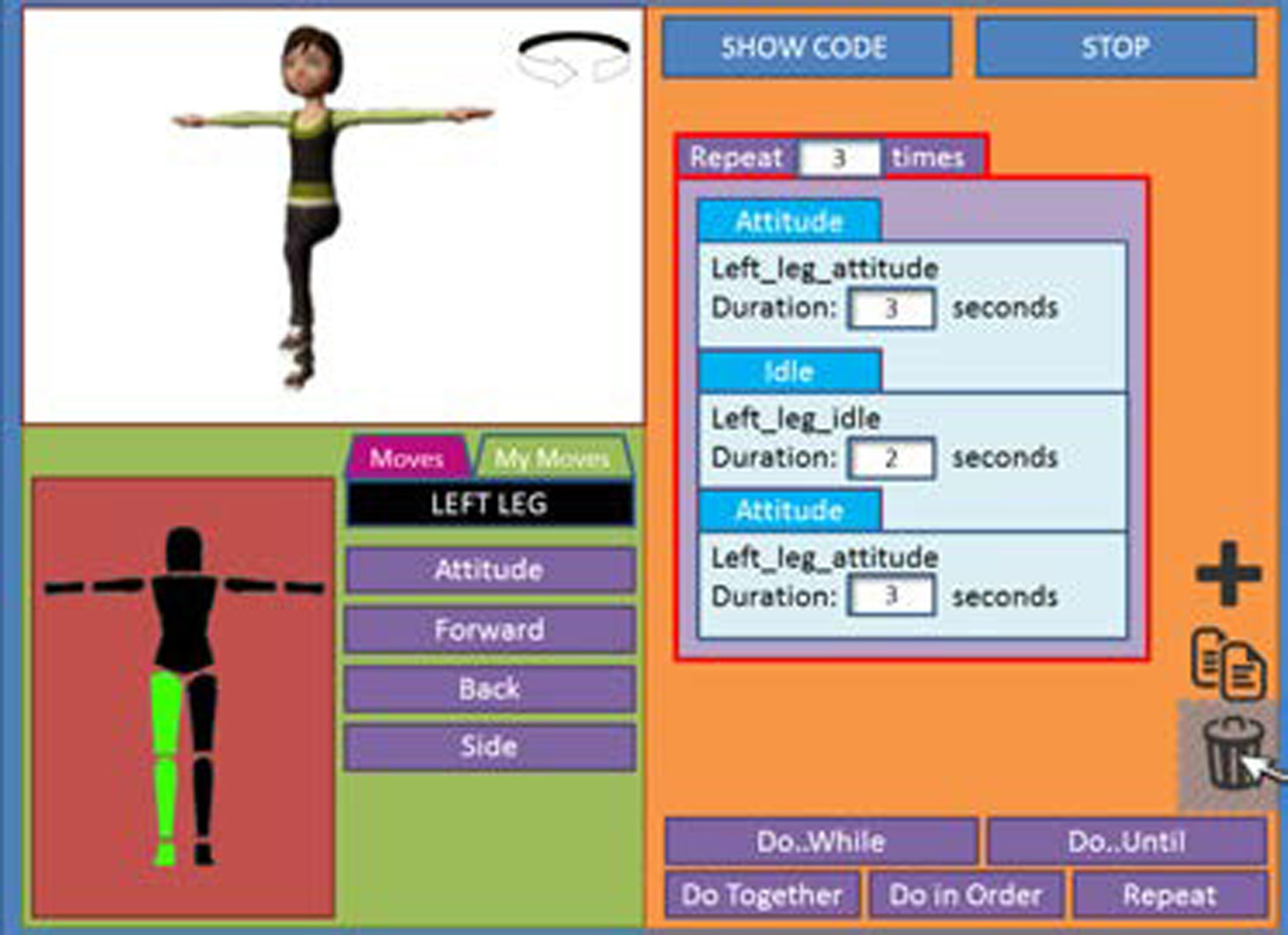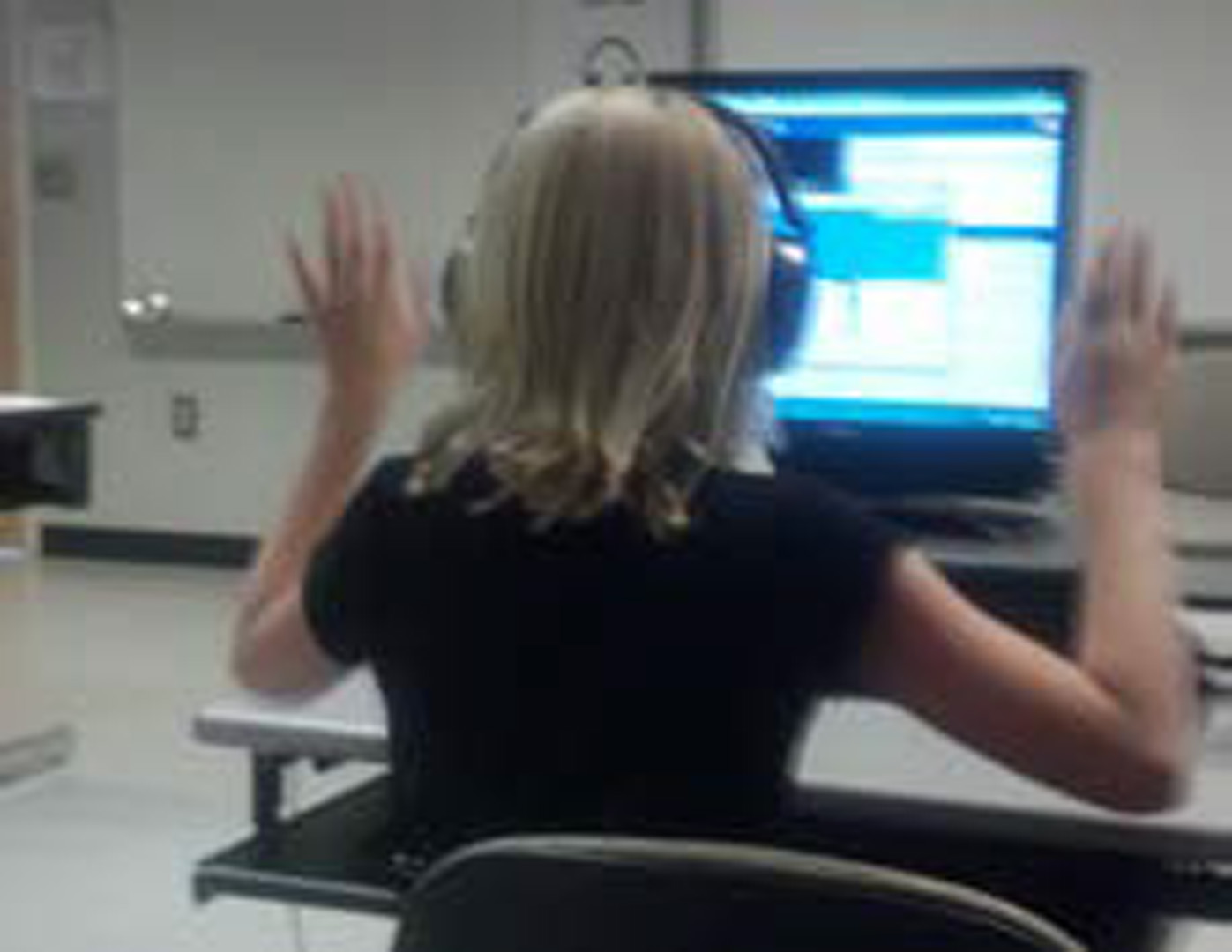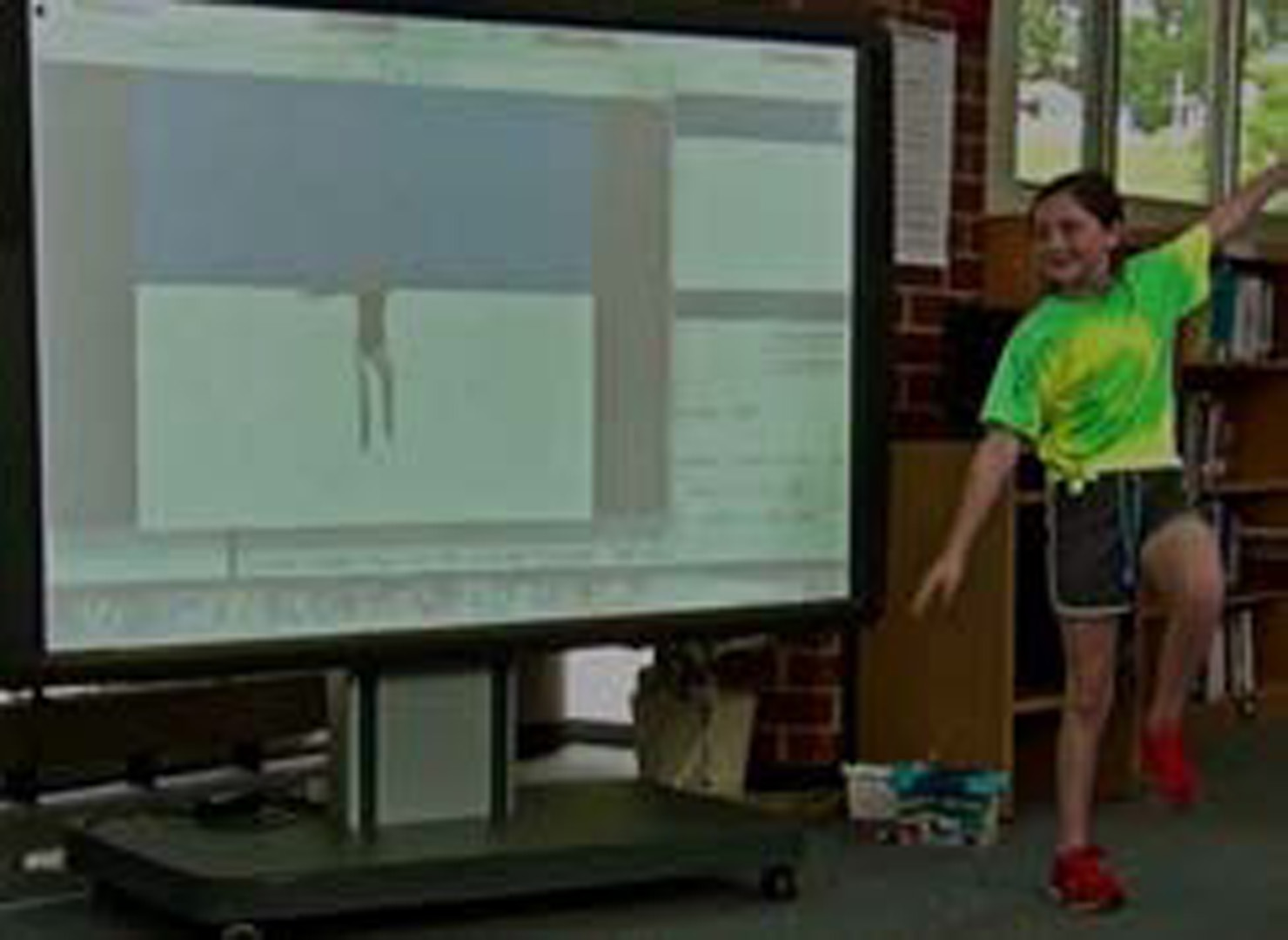“Character Animation and Embodiment in Teaching Computational Thinking” by Jörg, Leonard, Babu, Gundersen, Parmar, et al. …
Conference:
Type(s):
Title:
- Character Animation and Embodiment in Teaching Computational Thinking
Presenter(s)/Author(s):
- Sophie Jörg
- Alison E. Leonard
- Sabarish Babu
- Kara Gundersen
- Dhaval Parmar
- Kevin Boggs
- Shaundra Bryant Daily
Entry Number: 26
Abstract:
We introduce a new approach to teach 5th and 6th graders computational thinking with the goal of increasing the proportion of minorities and, specifically, women in computing. Previous research has shown promising results when applications outside of traditional computer science are involved, and when the writing of syntax is omitted [Kelleher et al. 2007; Maloney et al. 2010].
In our approach, middle school children learn computational thinking concepts by creating choreography for a virtual character. Movement and programming tasks and activities are alternated and combined, and children learn while at the same time actively using their body. Our approach is based on embodied pedagogy, where moving one’s body is used to support learning [Kontra et al. 2012].
References:
- Daily, S. B., Leonard, A. E., Jörg, S., Babu, S., and Gundersen, K. 2014. Dancing alice: Exploring embodied pedagogical strategies for learning computational thinking. In Symp. on Computer Science Education, SIGCSE ’14, 91–96.
- Kelleher, C., Pausch, R., and Kiesler, S. 2007. Storytelling alice motivates middle school girls to learn computer programming. In Conference on Human Factors in Computing Systems, CHI ’07, 1455–1464.
- Kontra, C., Goldin-Meadow, S., and Beilock., S. L. 2012. Embodied learning across the life span. Topics in Cognitive Science 4, 4, 731–739.
- Maloney, J., Resnick, M., Rusk, N., Silverman, B., and Eastmond, E. 2010. The scratch programming language and environment. Trans. Comput. Educ. 10, 4 (Nov.), 16:1–16:15.
Acknowledgements:
This material is based in part upon work supported by the National Science Foundation under Grant Number 1344228. Any opinions, findings, and conclusions or recommendations expressed in this material are those of the author(s) and do not necessarily reflect the views of the National Science Foundation.







